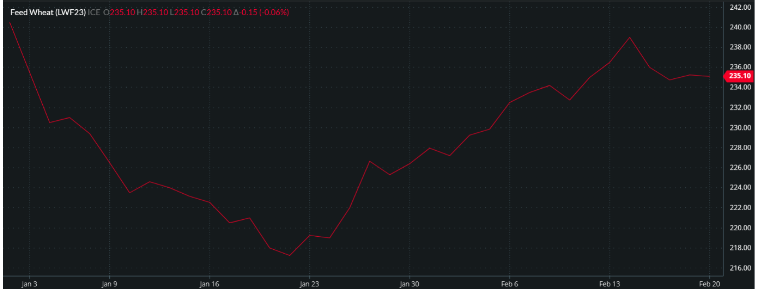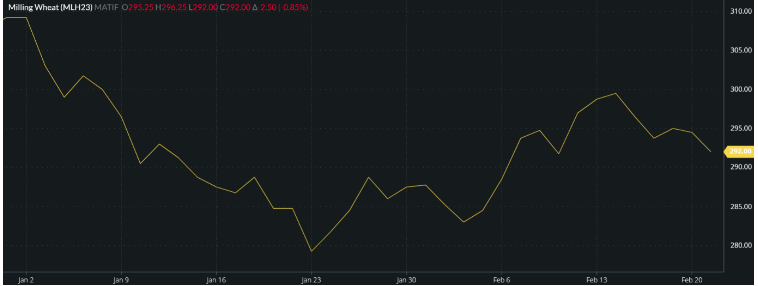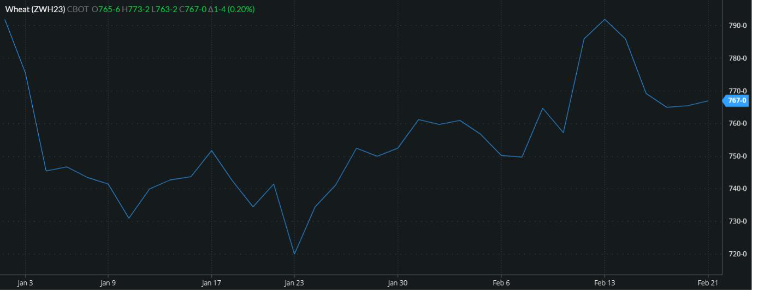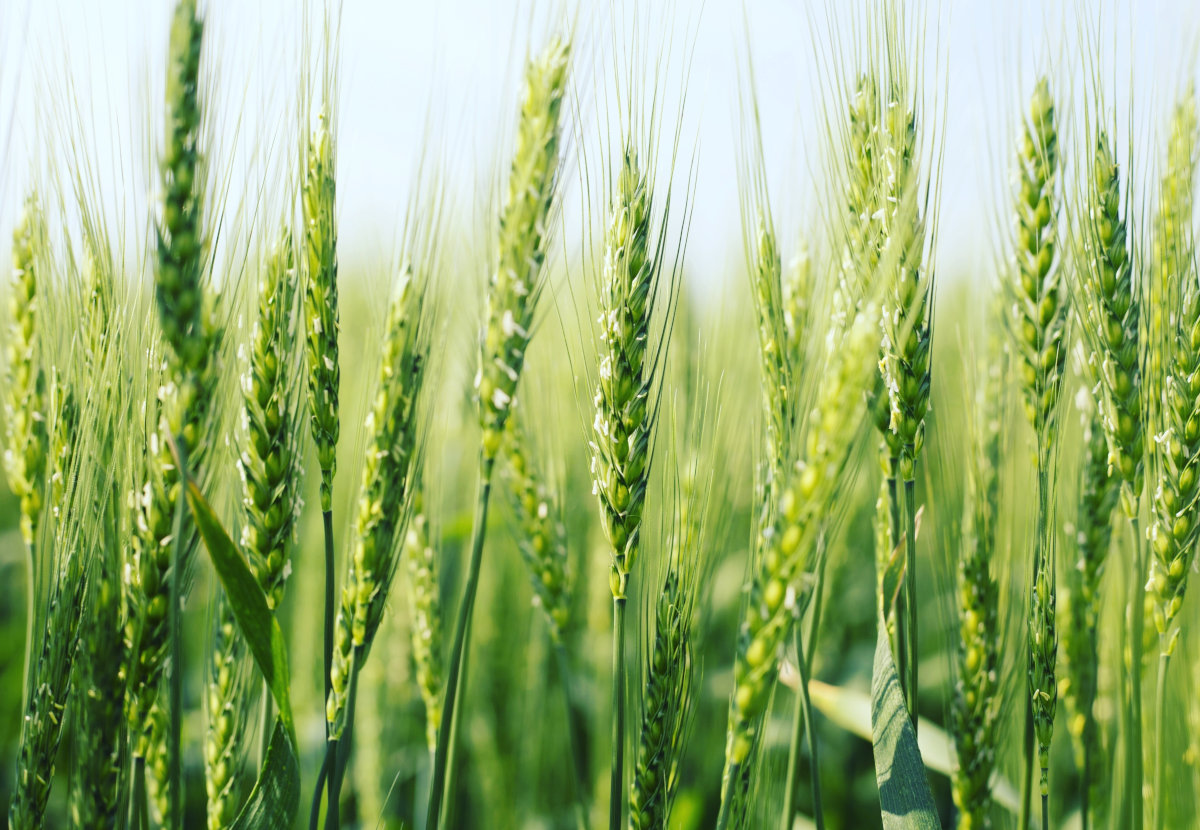Insight Focus
- Despite a crazy 2022 now confined to history, 2023 is full of uncertainties
- Russia’s war remains a major focus
- Some large plantings for 2023, but the weather is unpredictable
Introduction
We have written about the crazy year of 2022 over many months. Will 2023 be significantly calmer, or are there more extraordinary moves in store?
The wheat markets have started the year with ups and downs but less volatility than we saw for much of last year. However, there are no guarantees of peaceful markets in the months ahead.
The markets so far in 2023
Looking at the charts below and wheat prices thus far in 2023, there does not appear to be a one-way trend that will prevail.
London wheat futures

Paris milling wheat futures

Chicago SRW wheat futures

(Chart source Barchart Commodityview)
The major wheat market drivers
The main influences steering the markets so far in 2023, are likely to be the prevailing stories for focus over the coming few months.
Planted acres for 2023
Wheat acres look to be larger for 2023 than they were for 2022.
A well-publicised example was seen from the US department of agriculture winter wheat plantings for the US, at 36.95 million acres, up from 33.27 last year.
The next few months will start to give a clearer picture as spring wheat plantings progress across the Northern Hemisphere and estimates of total wheat acres for the 2023 harvest take shape.
Weather
The fundamental price driver that is never far from market headlines is the weather.
Drought in Argentina has driven the decline in wheat production forecasts for the recent harvest. Optimism for a 21+ million metric tonne harvest many months ago, has been on a drought induced decline to less than 12mmt more recently.
With concerns for winter wheat crops in the Northern Hemisphere as they head into spring from dryness in the US to Russia’s ‘ice-crust’, there is no certainty that large acres will produce big harvest numbers.
Nonetheless, adding to the complications, is the simple fact that wheat is an incredibly resilient plant.
History has shown time and again that less than ideal weather through the winter months is absolutely no reason to write off a crops prospects.
War and the Black Sea grain corridor agreement.
Russia’s war in the Ukraine has been a constant headline for the wheat markets since the invasion on 24th February last year. This due to Russia being the World’s largest wheat exporting country and Ukraine, pre-war, the 4th largest.
The Black Sea grain corridor, thankfully brokered by Turkey and the United Nations has allowed much needed wheat to be shipped to the World’s most needy and biggest importers in Africa since the summer months of last year.
Renewed in November, with some difficult discussions, the agreement is yet again due to be renewed in March. This will require participation of both Russia and Ukraine, although both are currently expressing their disappointment with the efficiency with which the agreement is functioning.
Conclusions
With large plantings, optimism for limited price rallies and more market stability may be well founded.
Weather remains the constant unknown, with the likelihood of drought, floods and weather extremes setting yet more new records in 2023.
The impact of these on the remarkably resilient wheat crops of the World will no doubt be debated well into the summer months as harvest begins.
The prospects for peace in Ukraine do not look good, but the hope remains that at least the Black Sea grain agreement can keep wheat vessels moving.
We were not anticipating a European country invasion 12 months ago. This reminds us that the next news headline has the potential to create another angle of turmoil.
Interesting months ahead, with much to keep all market participants focused.













